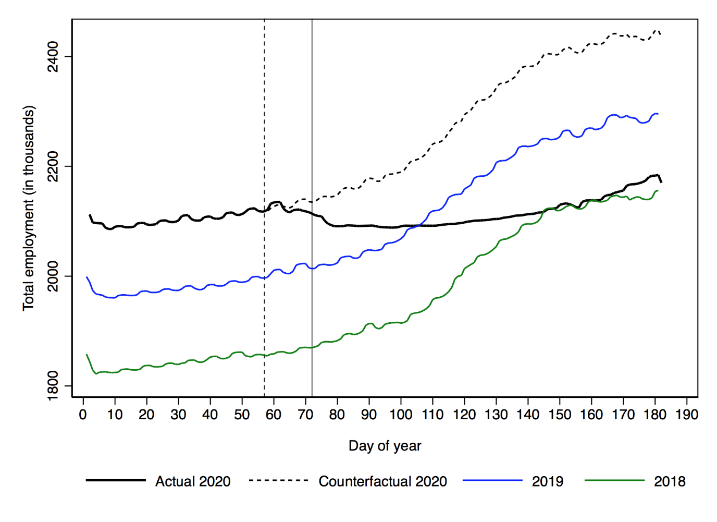Photo by Courtney Hall on Unsplash
Authors: Mauro Testaverde and Gordon Betcherman
The COVID-19 pandemic has affected labor markets everywhere. In some countries, like the US and Canada, unemployment skyrocketed to levels not seen in living memory. In others, including several in Europe, things have looked very different, with few layoffs and workers often remaining attached to their employer, even if they were working little or not at all.
With Greek academic colleagues, we have just completed an analysis of the labor market impacts of the early months of the pandemic in Greece. To this point, Greece has managed the virus well, through a rapidly imposed and strict lockdown. But the cost has been a severe economic slowdown, expected to be one of the worst in Europe. Share on X This has been particularly discouraging since the economy finally seemed to be recovering from the decade-long economic crisis. Mobility data show that between March and early May, Greeks stayed home. But unemployment did not increase; in fact, there were fewer separations in those months than in previous years. This does not mean that the labor market was not significantly affected by the lockdown. It was – virtually no jobs were created in these months which are usually when the large tourism sector gears up. In fact, we estimate that By the end of June, employment in Greece was 12% lower than it would have been had there not been a pandemic, with the majority of these “missing” jobs related to tourism. Share on X.
Figure 1: Observed and counterfactual employment in 2020 and employment in 2018 and 2019

Source: Betcherman et al. (2020), based on ERGANI data.
Note: Vertical lines indicate days when the first COVID-19 case was identified and when workplace restrictions were implemented.
So what explains these patterns? The answer lies in the policies the Greek Government adopted to mitigate the costs of the lockdown. Cash transfers were available to workers on the condition they were not laid off from their employers whose operations had been harmed by the lockdown. Moreover, layoffs were prohibited in sectors designated as affected by the crisis. Like other EU countries, such as Germany and Italy, the job protection strategy ensured that large numbers of layoffs would not be a consequence of the lockdown.
What can we then conclude about the medium-to-longer-term? Three questions deserve close attention:
- What policy approaches will prove most effective as countries attempt to restart their economies? Job protection models have looked good in the immediacy of the crisis. But how well suited will they be for supporting job creation in the coming months? On the one hand, firms looking to gear up again will not have to search for new employees. However, subsidized workers who will not be recalled may have protracted unemployment spells because they will delay searching for a new job. The financial crisis is instructive here: Despite experiencing higher increases in unemployment than EU countries during the financial crisis, the United States recorded faster declines in unemployment in the ensuing years. Share on X
- How can the experience of the pandemic be used to design better long-term strategies to support workers while encouraging dynamic labor markets? The experience of the pandemic may point to the need for a more pro-active labor market strategy going forward. Compared to the initial response phase, a number of policy shifts may be needed to support a sustained recovery in the labor market once crisis management has receded: from employment retention to employment promotion policies; from blanket to targeted support; and from short-term to long-term human capital preservation.
- How can statistical systems inform policy responses in a timely and accurate manner? Measuring labor market outcomes has been a challenge because of the pandemic. Not only has it been difficult to collect data in the usual way, but the meaning of core concepts like employment and unemployment has changed under the circumstances. In addition, the constantly changing landscape during the pandemic raises the challenge of producing data that is timely enough to be relevant. Going forward, administrative and survey data will need to be complemented by non-traditional, real-time data sources.
The Covid-19 crisis has inadvertently created an opportunity to test policy options to encourage job creation and productivity growth, while helping workers to manage employment-related shocks. With digitalization, the Fourth Industrial Revolution, adaptations to climate change, and maybe even more health-related crises, the stakes for strengthening these policies are only likely to increase.
This is the fifteenth blog on ways to protect workers and jobs in the COVID-19 (Coronavirus) crisis, based on an Institute for Labor Economics paper: “Reacting Quickly and Protecting Jobs:The Short-Term Impacts of the COVID-19 Lockdown on the Greek Labor Market.” Stay tuned for more blogs in the series.




